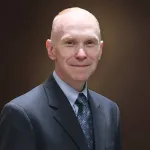When a pope dies, the governance of the Catholic Church temporarily passes to the College of Cardinals — currently made up of 250 men, aged 45 to 99. But only those under 80 are eligible to vote for the next pope and carry out the solemn task of announcing the new pontiff to the world.
SIGN UP FOR OUR NEWSLETTER HERE
The period between popes, known as the sede vacante, is marked by a carefully choreographed sequence of oaths, rituals, and ballots. At the forefront of this transition is the Camerlengo, or Chamberlain, who oversees the Church’s temporal affairs during the interregnum. Cardinal Kevin Farrell currently holds this office. His responsibilities include verifying the pope’s death, sealing his apartments, and organizing the funeral rites. While the Camerlengo plays a crucial logistical role, he does not lead spiritually once the Sistine Chapel doors are locked for the conclave.
Another key figure is Cardinal Raniero Cantalamessa, the Capuchin friar and emeritus papal preacher, who delivers a pre-conclave meditation to help the cardinals reflect on their spiritual responsibilities. At 91, he will not participate as a voter.
The Dean of the College of Cardinals, Cardinal Giovanni Battista Re, presides over pre-conclave meetings and leads the Mass for the election of the pope. However, as Cardinal Re is over 80, the role of asking the newly elected pope whether he accepts the office and what name he will take falls to the Vice Dean, Cardinal Leonardo Sandri. Since Sandri is also over 80, the task likely passes to Cardinal Pietro Parolin, the Vatican Secretary of State, or, if necessary, to Cardinal Fernando Filoni.
The largest and most decisive group are the cardinal electors — the 133 out of 135 eligible cardinals under 80. They swear an oath of secrecy and are secluded in the Sistine Chapel until a pope is elected. Each voting session begins with the preparation and distribution of paper ballots by two masters of ceremony. Nine cardinals are drawn by lot for each session: three as scrutineers (vote counters), three as infirmarii (to collect votes from any sick cardinals in their quarters), and three as revisers (to verify the vote count).
Supporting this process is Archbishop Ilson de Jesus Montanari, the secretary to the College of Cardinals, and Archbishop Diego Ravelli, the papal master of liturgical ceremonies. Ravelli will draft the final document certifying the new pope’s consent and chosen name.
Finally, two roles are essential for announcing the joyful news. The junior cardinal deacon, currently Cardinal George Alencherry (note: the transcript refers to “Kuvacod” but likely means Alencherry or another junior deacon), is responsible for closing and opening the chapel doors. The protodeacon, Cardinal Dominique Mamberti, will step onto the balcony of St. Peter’s Basilica to proclaim: Habemus Papam — “We have a pope” — and announce the new pope’s name, who then gives his first blessing to the city and the world.
As the world watches, these men carefully shepherd the Church through one of its most historic and sacred moments — the election of a successor to St. Peter.
Adapted by Jacob Stein
Live Updates for the Conclave

For the past 20 years, Dr. Matthew E. Bunson has been active in the area of Catholic social communications and education, including writing, editing, and teaching on a variety of topics related to Church history, the papacy, the saints and Catholic culture. He is faculty chair at Catholic Distance University, a senior fellow of the St. Paul Center for Biblical Theology, and the author or co-author of over 50 books including: "The Encyclopedia of Catholic History," "The Pope Encyclopedia," "We Have a Pope! Benedict XVI," "The Saints Encyclopedia"and best-selling biographies of St. Damien of Molokai and St. Kateri Tekakwitha.







